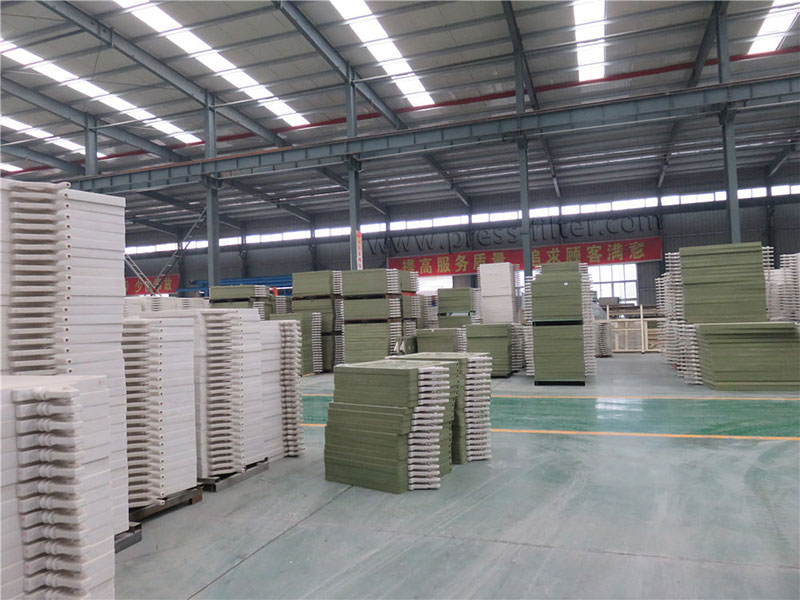Filter Plate Production Process
As the core component of the filter press, the design quality of the filter plate is closely related to the filter press’s filtration effect. The production of the filter plate is a complex process that involves multiple key steps, including hot melting, mold shaping, machine trimming, manual trimming, and finished product shaping. The following process is the detailed production process of the filter plate of the filter press.
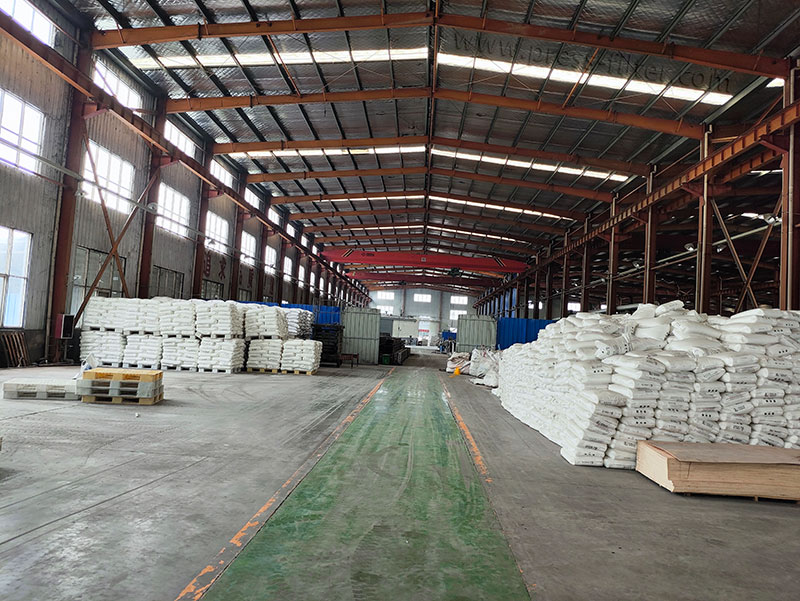
Raw Material Storage
The main material of the filter plate is polypropylene. Our filter plates use high-quality raw materials to produce high-quality filter plates.
Hot Melting
This is the first step in filter plate production. In this stage, the desired material (usually a polymer plastic such as polypropylene) is heated to a molten state. The hot melt process needs to be controlled within a specific temperature range to ensure that the material can flow and form correctly during the subsequent mold shaping stage.
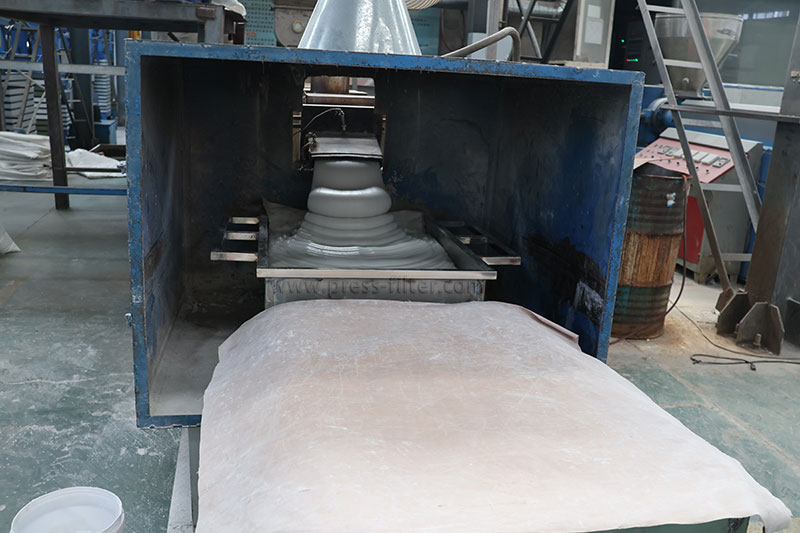
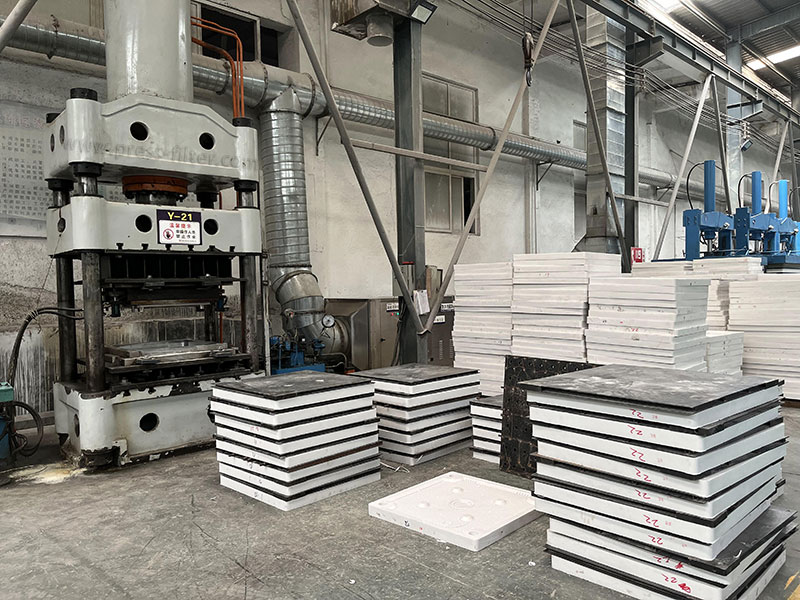
Mold Shaping
The molten plastic is injected into a pre-designed filter plate mold. The mold determines the final shape, size, and details of the filter plate. Mold shaping is a delicate process that requires ensuring that the material evenly fills every part of the mold to avoid any defects.
Finished Product Shaping
The final step is shaping the finished filter plate, a process that ensures the filter plate retains its shape and has the required mechanical strength and chemical resistance. The formed filter plate is placed in a specific machine and additional pressure is applied to ensure the stability and durability of the filter plate.
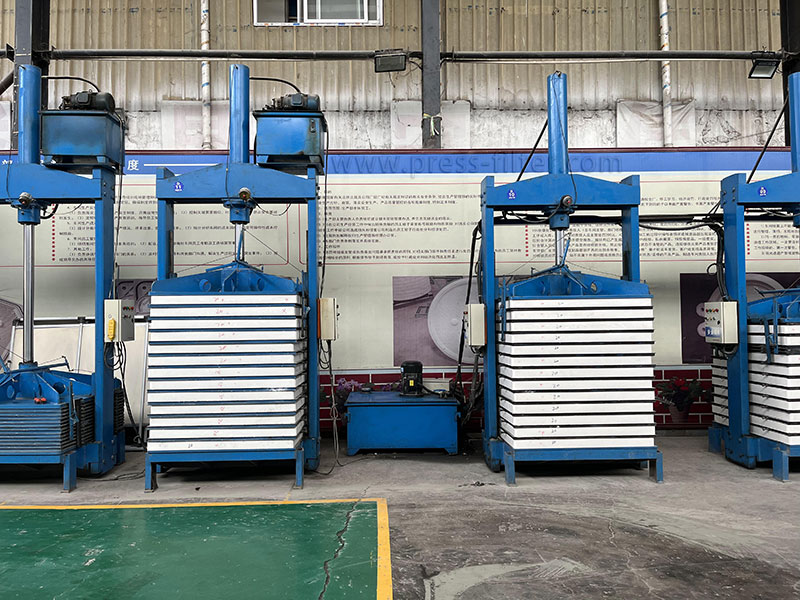
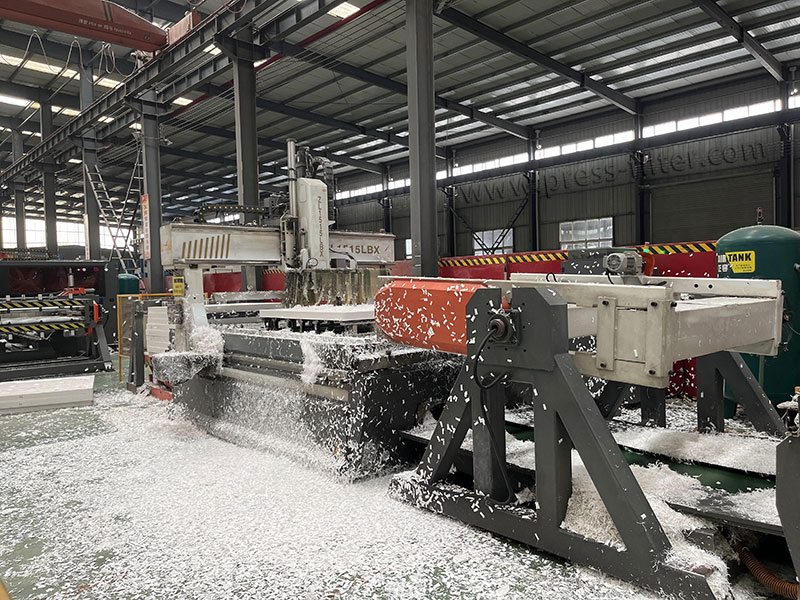
Machine Trimming
Once the plastic has cooled and solidified in the mold, the formed filter plate needs to be removed from the mold. There may be excess material on the edge of the formed filter plate, which needs to be processed by machine trimming. Machine edge trimming is an automated process that cleans filter plate edges quickly and efficiently.
Manual Trimming
After machine trimming, manual trimming is also required. This is a more delicate process where workers manually inspect and remove any remaining burrs or uneven parts to ensure the quality and appearance of the filter plates.
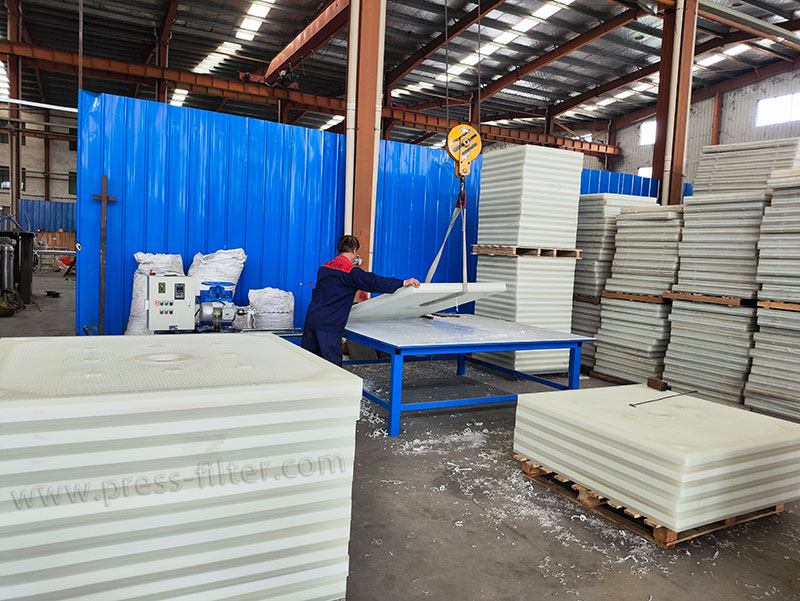
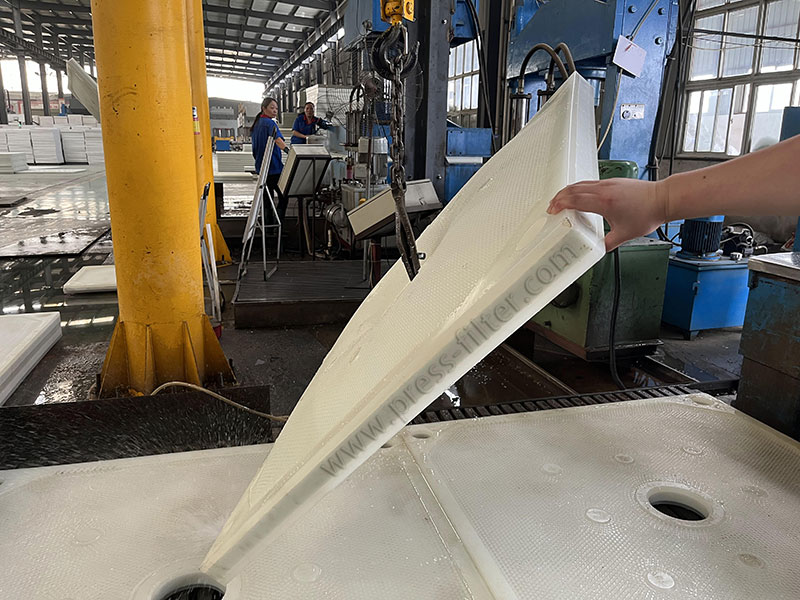
Filter Plate Testing
After the filter plate is made, each diaphragm filter plate will be tested. The filter plate in the picture has been filled with water to test whether the filter plate leaks and whether it can withstand large pressure. The production of the filter plate is completed after the test.
Product Warehouse
The produced filter plates are placed uniformly in the warehouse. We can see high-quality filter plates of various types and sizes in the finished product workshop.
